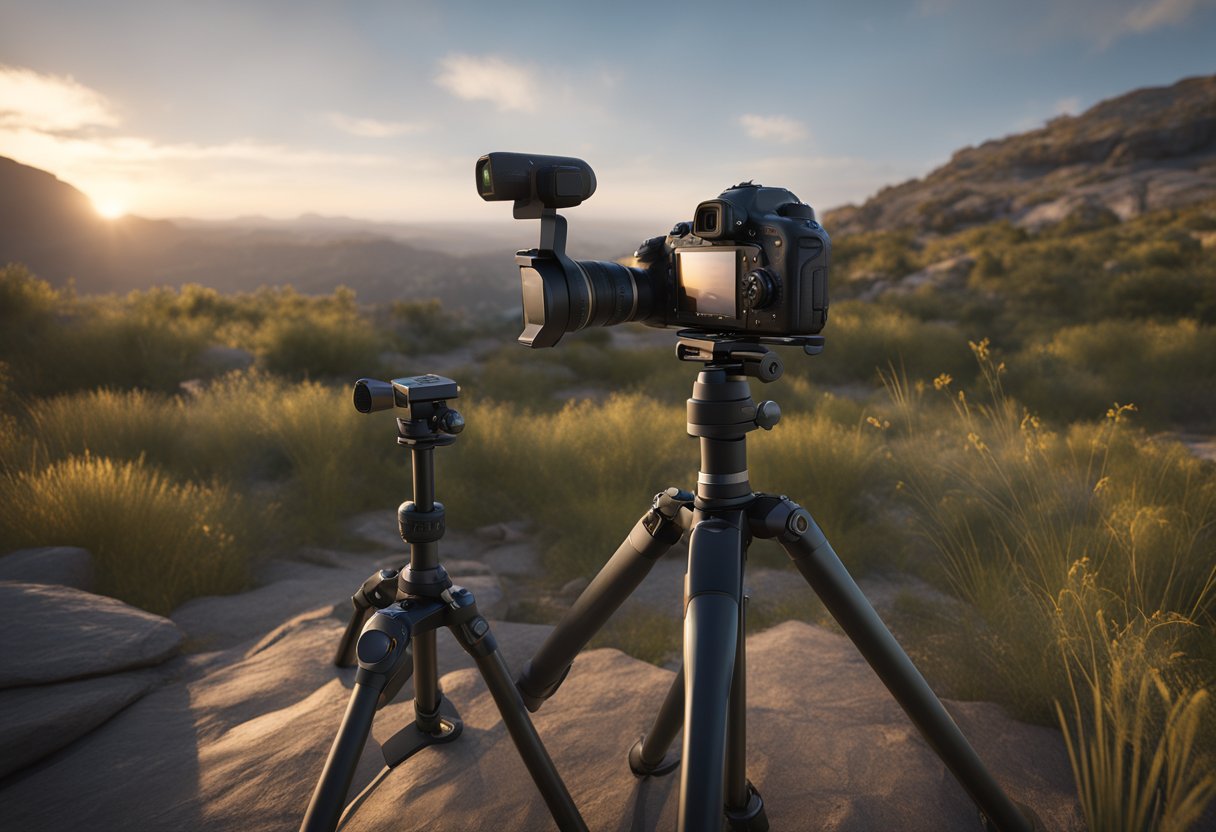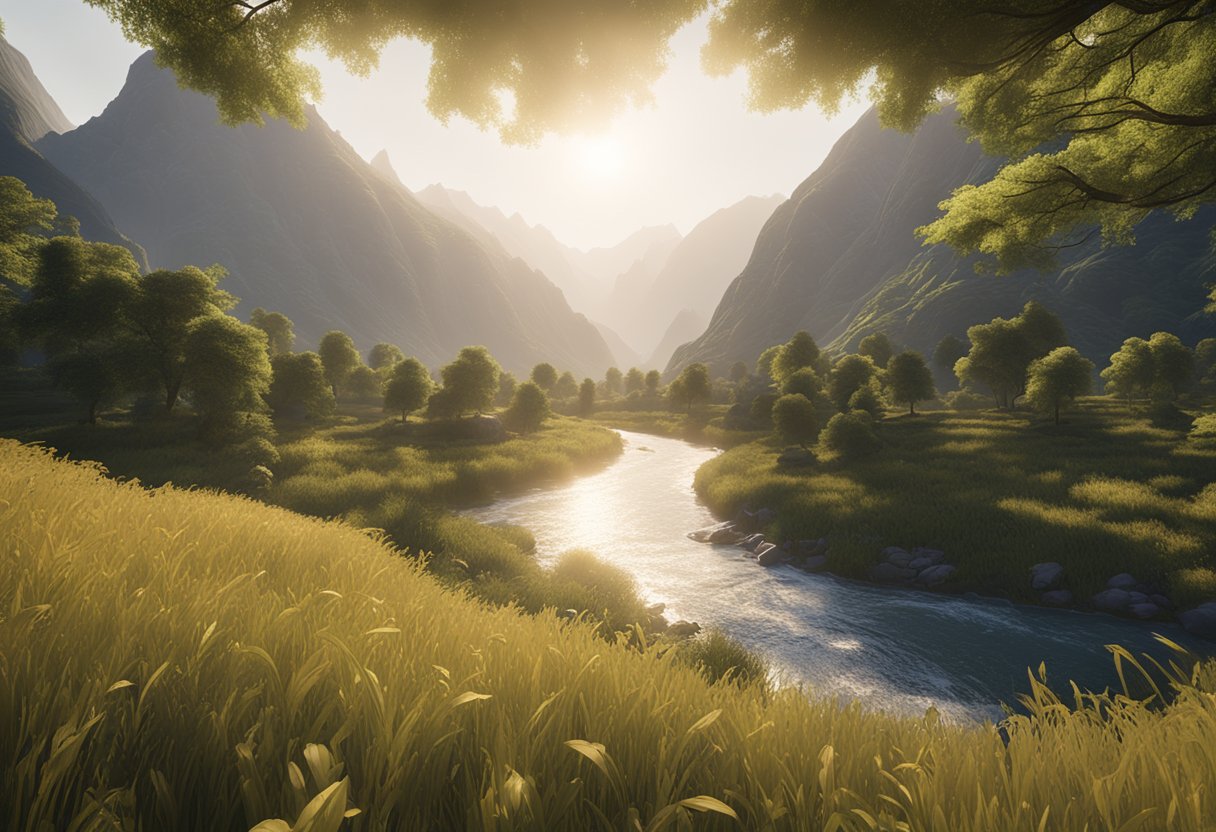
Leading lines are a powerful tool that can help photographers create compelling compositions in landscape photography. By using lines in the foreground, middle ground, or background of a scene, photographers can guide the viewer’s eye towards the main subject and create a sense of depth and dimensionality in the image. In this article, readers will learn how to effectively use leading lines to enhance their landscape photography.
One of the key benefits of using leading lines in landscape photography is that they can help create a sense of movement and flow in the image. By using lines that lead the viewer’s eye from one part of the image to another, photographers can create a dynamic composition that draws the viewer in and keeps them engaged. Additionally, leading lines can be used to create a sense of scale and perspective in the image, which can help to emphasize the grandeur and majesty of the landscape.
To effectively use leading lines in landscape photography, it is important to carefully consider the placement and direction of the lines in the image. The photographer should look for natural or man-made elements in the scene that can be used as leading lines, such as roads, rivers, fences, or tree branches. By positioning the camera and adjusting the composition, the photographer can create a strong visual connection between the lines and the main subject of the image, resulting in a powerful and impactful photograph.
Understanding Leading Lines

Definition and Importance
Leading lines are a powerful composition tool that can be used to draw the viewer’s eye into a photograph and guide them through the image. They are defined as any lines or shapes that lead the viewer’s eye towards a specific point of interest in the photograph.
Leading lines are important because they can help create depth and dimension in a photograph, as well as create a sense of movement or direction. They can also be used to create a sense of scale, by using lines that converge towards a distant point.
Types of Leading Lines
There are several types of leading lines that can be used in landscape photography. These include:
- Diagonal lines: These lines are created when two points in the image are connected by a diagonal line. They can be used to create a sense of movement or to add dynamism to an image.
- Vertical lines: These lines are created by tall objects such as trees or buildings, and can be used to create a sense of height or grandeur.
- Horizontal lines: These lines are created by objects such as horizons or shorelines, and can be used to create a sense of calm or stability.
- Curved lines: These lines are created by natural or man-made curves in the landscape, and can be used to create a sense of flow or movement.
By understanding the different types of leading lines, photographers can choose the best type of line for the specific scene they are photographing.
Finding Leading Lines in Landscapes

Natural Lines
Natural lines are the ones that occur naturally in landscapes. These lines can be found in various forms such as rivers, mountains, trees, and even clouds. The key to finding natural lines is to observe the landscape carefully and look for elements that can guide the viewer’s eye towards the main subject. For example, a river can lead the viewer’s eye towards the horizon, while a mountain range can create a sense of depth in the image.
Man-Made Lines
Man-made lines are the ones that are created by humans. These lines can be found in various forms such as roads, buildings, fences, and bridges. Man-made lines can be used to create a sense of symmetry and balance in the image. For example, a road can lead the viewer’s eye towards the main subject, while a fence can create a sense of enclosure in the image.
Interplay of Light and Shadow
The interplay of light and shadow can also create leading lines in landscapes. Shadows can be used to create lines that lead the viewer’s eye towards the main subject. For example, the shadow of a tree can create a line that leads the viewer’s eye towards the main subject. Similarly, light can also be used to create leading lines. For example, the rays of the sun can create a line that leads the viewer’s eye towards the main subject.
Overall, finding leading lines in landscapes is all about observing the landscape carefully and looking for elements that can guide the viewer’s eye towards the main subject. By using natural lines, man-made lines, and the interplay of light and shadow, photographers can create images that are visually compelling and engaging.
Composing with Leading Lines
When it comes to landscape photography, leading lines can be a powerful tool to create a sense of depth and guide the viewer’s eye through the image. In this section, we’ll explore how to effectively use leading lines to enhance composition in landscapes.
Rule of Thirds and Leading Lines
The rule of thirds is a classic composition technique that can be combined with leading lines to create a visually appealing image. By placing the horizon or other important elements along one of the imaginary lines dividing the image into thirds, you can create a more balanced and interesting composition. When using leading lines, try to position them so that they lead the viewer’s eye towards one of these points of interest.
Balancing Elements
While leading lines can be a great way to add interest to an image, it’s important to balance them with other elements in the scene. This could include other lines, shapes, or contrasting colors. By doing so, you can create a more dynamic and visually engaging composition.
Perspective and Depth
Leading lines can also be used to create a sense of perspective and depth in an image. By positioning the lines in a way that leads the viewer’s eye towards the background of the scene, you can create a sense of distance and make the image feel more three-dimensional. This can be particularly effective when photographing landscapes with prominent foreground elements, such as rocks or trees.
In conclusion, leading lines can be a powerful tool for enhancing composition in landscape photography. By combining them with other composition techniques and balancing them with other elements in the scene, you can create visually engaging images with a sense of depth and perspective.
Technical Considerations
Lens Choice
Choosing the right lens is crucial when using leading lines in landscape photography. A wide-angle lens is often the preferred choice as it allows for a wider field of view and can help exaggerate the perspective of the leading lines. However, it’s important to keep in mind that using a lens that is too wide can result in distortion and make the lines appear unnatural. A focal length of around 24mm to 35mm is usually a good range to work with.
Aperture Settings
The aperture setting you choose can greatly affect the overall look and feel of your image. A smaller aperture (higher f-stop number) will result in a larger depth of field, meaning more of the image will be in focus. This can be useful when you want to emphasize the leading lines throughout the entire image. On the other hand, a larger aperture (lower f-stop number) will result in a shallower depth of field, which can be useful when you want to isolate a specific point along the leading lines.
Focusing Techniques
When using leading lines in landscape photography, it’s important to ensure that the lines are sharp and in focus. One technique to achieve this is to use manual focus and focus on a point along the leading lines. Another technique is to use autofocus and select a single focus point, then position that point over the point along the leading lines that you want to be in focus. It’s also important to check the focus throughout the image to ensure that the lines remain sharp and in focus.
Creative Approaches
Leading lines are a powerful tool in landscape photography, and creative approaches can take your compositions to the next level. Here are some ways to experiment with leading lines and enhance your images.
Breaking the Rules
While it’s important to understand the traditional rules of composition, breaking them can lead to unique and compelling images. Rather than always placing leading lines in the foreground, try placing them in the middle or even the background of your image. This can create a sense of depth and draw the viewer’s eye through the entire frame.
Using Color and Contrast
Leading lines don’t have to be limited to just lines. Using color and contrast to create leading elements can be just as effective. Look for areas of high contrast or bold colors that can draw the viewer’s eye and lead them through the image. This can be especially effective in landscapes with muted or monochromatic color palettes.
Storytelling with Lines
Leading lines can also be used to tell a story within the image. Consider using lines to guide the viewer’s eye towards a specific subject or point of interest. This can create a sense of narrative and help to convey a specific mood or emotion.
By experimenting with these creative approaches, you can take your use of leading lines to the next level and create truly unique and compelling landscape images.
Final Words
Incorporating leading lines is a powerful technique to enhance the composition of landscape photos. By guiding the viewer’s eye towards the main subject of the photo, leading lines can create a sense of depth and dimensionality that draws the viewer into the scene.
When using leading lines, it’s important to consider the direction and placement of the lines. Horizontal lines can create a sense of calm and stability, while diagonal lines can add a sense of energy and movement. Vertical lines can convey a sense of height and strength.
It’s also important to consider the placement of the main subject in relation to the leading lines. Placing the subject at the end of the lines can create a sense of balance and harmony, while placing the subject off-center can add a sense of tension and drama.
Remember to experiment with different angles and perspectives to find the most effective use of leading lines in your landscape photos. With practice and experimentation, you can master this technique and create stunning, dynamic compositions that capture the beauty and majesty of the natural world.




